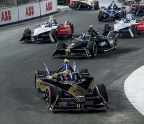The porpoise effect


Motorsport-wise, one of the key problems that has emerged from early season testing of the new generation Formula 1 cars is so-called porpoising. Given that myself and ChassisSim customers have dealt with this to some degree over the years, I’ve had a wry giggle at the number of lay punters out there who think this is a new thing.
Porpoising… is low-to-high frequency oscillation in the pitch mode of the sprung mass of the vehicle
Porpoising has been around for a good while now, and is one of the things that’s always lurking around the corner if you run a high-downforce racecar. In this article we’ll discuss what it is and, more importantly, how you can deal with it.
First things first. If you insist on running a high-downforce racecar that is passive, the risk of porpoising is the price you pay. It doesn’t matter whether you’re
You’re reading a preview, subscribe to read more.
Start your free 30 days





